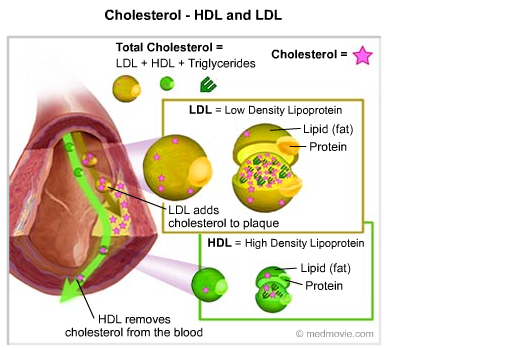The short answer is yes. Here is the explanation:
“Bad” Cholesterol
Cholesterol can’t dissolve in the blood. It has to be transported to and from the cells by carriers called lipoproteins. Low-density lipoprotein, or LDL, is known as “bad” cholesterol. High-density lipoprotein, or HDL, is known as “good” cholesterol. These two types of lipids, along with triglycerides and Lp(a) cholesterol, make up your total cholesterol count, which can be determined through a blood test.
LDL (Bad) Cholesterol
When too much LDL (bad) cholesterol circulates in the blood, it can slowly build up in the inner walls of the arteries that feed the heart and brain. Together with other substances, it can form plaque, a thick, hard deposit that can narrow the arteries and make them less flexible. This condition is known as atherosclerosis. If a clot forms that blocks a narrowed artery, heart attack or stroke can result.
HDL (Good) Cholesterol
About one-fourth to one-third of blood cholesterol is carried by high-density lipoprotein (HDL). HDL cholesterol is known as “good” cholesterol, because high levels of HDL seem to protect against heart attack. Low levels of HDL (less than 40 mg/dL) also increase the risk of heart disease. Medical experts think that HDL tends to carry cholesterol away from the arteries and back to the liver, where it’s passed from the body. Some experts believe that HDL removes excess cholesterol from arterial plaque, slowing its buildup.
Triglycerides
Triglyceride is a form of fat made in the body. Elevated triglycerides can be due to overweight/obesity, physical inactivity, cigarette smoking, excess alcohol consumption and a diet very high in carbohydrates (60 percent of total calories or more). People with high triglycerides often have a high total cholesterol level, including a high LDL (bad) level and a low HDL (good) level. Many people with heart disease and/or diabetes also have high triglyceride levels.
Lp(a) Cholesterol
Lp(a) is a genetic variation of LDL (bad) cholesterol. A high level of Lp(a) is a significant risk factor for the premature development of fatty deposits in arteries. Lp(a) isn’t fully understood, but it may interact with substances found in artery walls and contribute to the buildup of fatty deposits.
This is what cholesterol looks like:
You can calculate your risk of developing coronary artery disease and/or stroke here:
http://www.cardiac-risk-assessment.com/app/risk-assessment.php
Hope this helps,
Dr T

